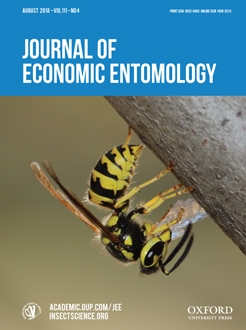The Australian blow fly, Lucilia cuprina Wiedmann (Diptera: Calliphoridae), is a major cause of myiasis (flystrike) in Merino sheep in Australia and New Zealand and, as a primary colonizer of fresh carrion, also an important species in forensic investigations. Olfaction is considered the most important cue for insects to rapidly locate carrion over long distances, so the first carrion visitors are predicted to be very sensitive to carrion-related volatile compounds. We studied the responses of the Australian blow fly, Lucilia cuprina, to the carrion-associated compounds dimethyl trisulfide (DMTS), butyric acid, 1-octen-3-ol and indole. We also tested 2-mercaptoethanol, a compound commonly used in fly traps in Australia. We investigated whether responses of the flies are affected by their ovarian status by comparing responses of gravid and non-gravid L. cuprina in electroantennography (EAG) and two-choice laboratory bioassays. All four compounds evoked an EAG response, while only DMTS evoked responses in gas chromatography-mass spectrometry electroantennographic detection (GCMS-EAD) analyses and two-choice bioassays. Gravid flies detected lower doses of the test compounds than non-gravid flies. Our results indicate that DMTS is an important semiochemical for L. cuprina to locate carrion resources, and has potential for use in fly traps for flystrike control. Our observations also suggest that the greater sensitivity of gravid L. cuprina allows them to find fresh carrion quickly to maximize reproductive success by avoiding unsuitable degraded carrion.
How to translate text using browser tools
4 May 2018
Behavior and Electrophysiological Response of Gravid and Non-Gravid Lucilia cuprina (Diptera: Calliphoridae) to Carrion-Associated Compounds
Guanjie Yan,
Shimin Liu,
Anthony C. Schlink,
Gavin R. Flematti,
Bekka S. Brodie,
Bjorn Bohman,
Johan C. Greeff,
Philip E. Vercoe,
Jianhong Hu,
Graeme B. Martin
ACCESS THE FULL ARTICLE
It is not available for individual sale.
This article is only available to subscribers.
It is not available for individual sale.
It is not available for individual sale.

Journal of Economic Entomology
Vol. 111 • No. 4
August 2018
Vol. 111 • No. 4
August 2018
blowfly
dimethyl trisulfide
electroantennography
flystrike
reproductive state




